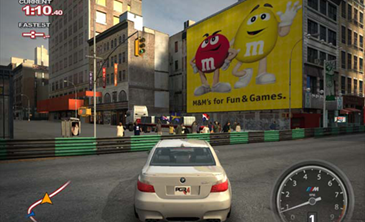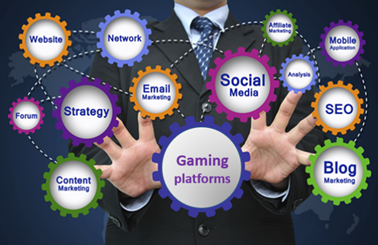
Opinion: Game over traditional marketing

Game over traditional marketing, why Fortnite could be a better bet
By James Delves
What was your lead prospect doing at 7pm on Saturday? Watching TV, walking the dog, maybe getting ready to go out? To reach this person at this time would require TV adverts, outdoor billboards, maybe some targeted email if you could get them to look at their phone. Now to make things even harder, how do you reach millions of people and then make them interact with your brand?
Fortnite
Well at exactly the same time last Saturday, 10 million potential consumers of yours logged on to the game Fortnite and, rather than playing the usual game, they were met with a large concert stage. On stage was an avatar of the famous dance DJ, Marshmello.
While the Maroon 5 courted controversy by playing the Super Bowl half-time show on Sunday, millions of gamers, journalists and intrigued members of public were hitting social media to promote their delight at the live virtual performance.
Marshmello played a live 10-minute set, in which he interacted with the virtual audience as their avatars flew around a virtual nightclub and danced. As well as attracting millions of fans on the night, the music event has since been viewed over 14 million times on Marshmello's YouTube channel (once each person has watched a paid advert). That’s not the end, the virtual gig is expected to be seen by millions more, as Fortnite has over 200 million registered players and the event is covered by the world’s media. I think we can all agree, as we say in the sector, ‘that’s a lot of eyes in one place’.
Grow up, gamers aren’t my audience, right?
I know what you’re thinking. Your audience isn’t gamers, right? They’re CMOs, senior marketing executives, brand managers… members of the public. However, research increasingly shows that gamers aren’t just people who sit at home, drinking energy drinks and playing Call of Duty. Gamers are now classed as anyone that consumes the form of video entertainment in which you participate. It encompasses PC gaming, mobile gaming and console gaming. It can be as simple as a member of your target audience picking up their phone to: crush some candy; fire farmyard animals at buildings; trap a Pokémon for their kid; or play one of the many politically targeted games like Trumping Donald. Games are everywhere and in one way or another we all interact with them.
Some 70% of Americans are now classed as gamers. The United Kingdom is home to the sixth largest video game worldwide, contributing £1.5 billion to the UK’s economy. It’s also an increasingly gender-friendly market sector – perfect for many brands. The average gamer is 35 years old, in a relationship or married and plays for up to 12 hours a week (that’s a lot of time on one media channel). Women are just as likely to be gamers as men. Those boys and girls who grew up playing Playstations are now in the boardroom - basically gamers are budget holders and execs up and down the country. In fact, statistically they could be the person sat opposite you in your next meeting.
So, what changed?
Video games have long been seen as a viable advertising platform for a collection of brave – often consumer-focused – brands. Dating back to 1978, a game called Adventureland included the first product placement, advertising its follow up game, Pirate Adventure. In the 80’s, more brands took notice as games got more sophisticated.
But do adverts in games actually work? The common-sense thinking would be that users would be too busy playing a game to notice advertising. However, a study from Grace and Coyle tested gamers and found that 35% of players could recall advertised brands in a racing game they had played.
When you compare this level of recall to traditional advertising, it’s impressive. According to the Huffington Post, the average internet user gets 11,150 online ads per month but will only remember a few. Meanwhile, research from Kantar Millward Brown found that even if consumers did remember the advertisements, a third of people found them more irritating than they were three years ago. It’s not just online or print ads, nearly 90% of people watching TV now fast-forward the ads. Adverts need to work harder now to be remembered and create marketers the ROI they used to.

Blending marketing and games
Today advertising can be found in games in a variety of mediums, including: billboards, storefronts, posters, apparel, vehicles, weapons, fliers, sponsored product placements. Some even promote interplay between players or the adverts themselves – driving brand recognition.
Organisations like RapidFire allow marketers to access an in-game advertising network, allowing for real-time and geo-targeted advertisement inside of video games. Adverts can be streamed in real-time on to objects such as billboards, hoardings, bus stops, and posters – essentially any object inside a game where a player is likely to see or interact with.
Every time the gaming sector takes a step forward, it becomes more enticing for the marketing world. Static banners down the side of pitches in FIFA have been replaced by memorable interactive experiences, which can deliver trackable results.
Show me the money
Epic Games, which owns Fortnite, globally distributes the game as a free download. The company makes money by charging players for costumes and accessories gamers can buy using in-game virtual currency. Advertisers can, therefore, pay to place items into the game for users to interact with. To promote its new film, Marvel paid for a character from Avengers: Infinity War to become part of the game, creating a crossover. Does the strategy work? Epic Games is estimated to be worth $4.5bn and advertisers are lining up to use the gaming platform.
More than half of the top 50 iOS games now monetise through in-app ads or enable the user to buy another life if they die simply by watching a quick ad (driven by Google’s Ad AdMob advertising service). Game publishers have even embraced traditional marketing tactics and use TTL strategies, allowing users to click on hyperlinks to click out of a game to visit a brand webpage for a bonus.
Game over traditional marketing?

Admit it, when you started this article you imagined your company or client’s brand on the t-shirt of Marshmello during the gig or brand featured on one of the adverts, which plays on the YouTube channel – I mean, who wouldn’t want the opportunity to reach over 10 million people in one 10-minute period, with 190 million set to log on to the same platform? The numbers are staggering.
So, should we all tear up our plans and move our budgets into just gaming? In short, no. Using the gaming medium will not always be the answer, it still depends on your audience, but the sector has evolved to the point that it should at least be considered as an option at the planning stage of every campaign.
In the past, a misunderstanding of the sector; doubt that paid advertising could reach an intended audience; or unclear ROI, were all key barriers. Today the sector has grown into a sophisticated multi-billion-pound industry, capable of delivering clear results.
In today’s complex, media landscape, reaching your audience via platforms they engage with for long periods will pay dividends. Social media, email, events will all still play a role but adding gaming to your marketing mix shouldn’t be overlooked.
CIM’s sophisticated range of digital marketing training options are among our most popular. Why not find out what the fuss is all about and maybe it could be your brand on centre stage - here?
*Photo credit - VALCOSEDM via REDDIT
More Stories
Fact Sheet 
An overview of CIM our history and services.
Sign up for the latest news
We’ll always treat your personal details with the utmost care and will never share or sell them to third parties. You are always in control of how we contact you – you can change your contact preferences at any time. For more information, visit our privacy policy.
To receive sector specific news:





